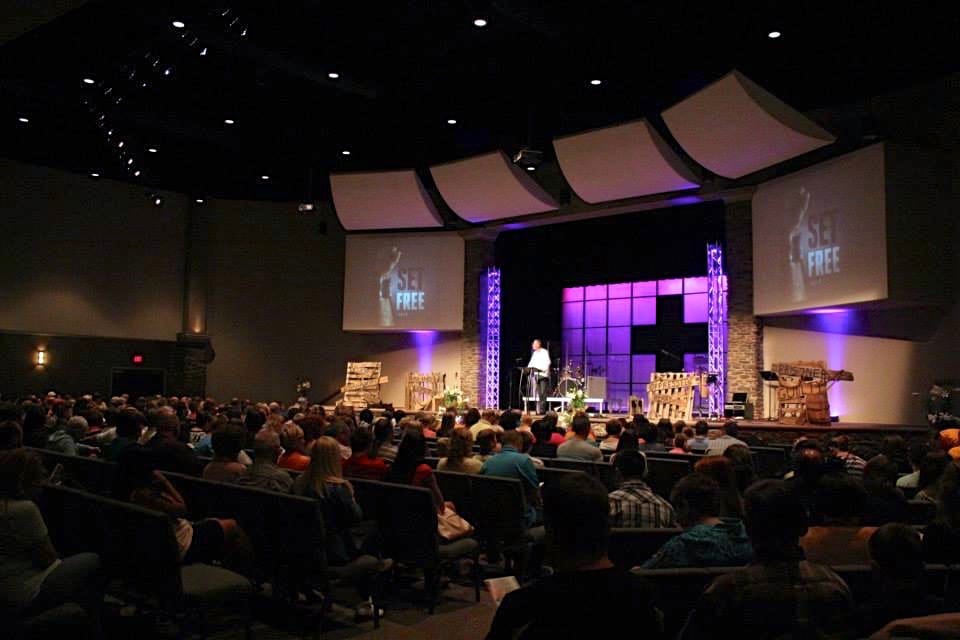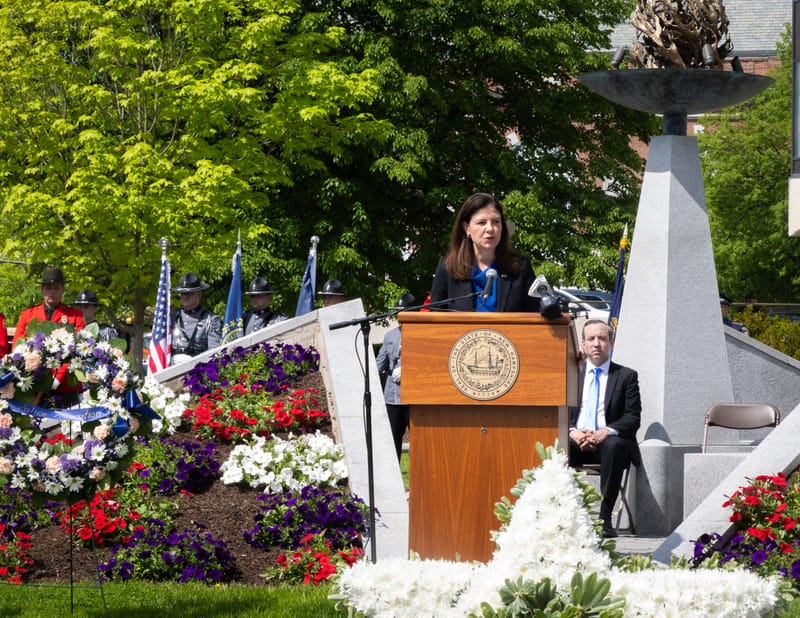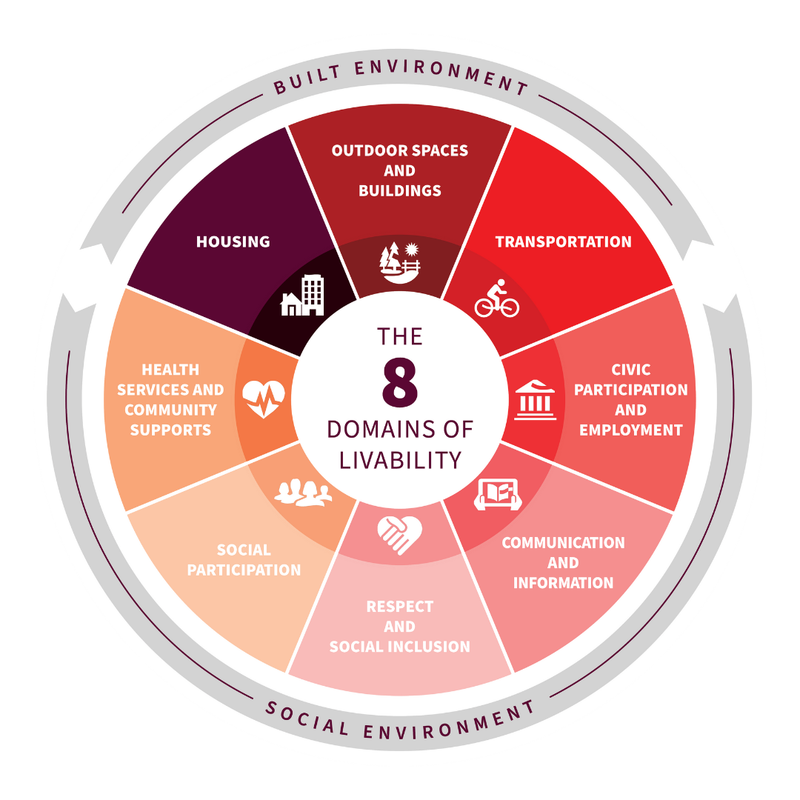Why Christian denominations?
after having similar conversations with a few teens and tweens in the youth group – who are the same generation as our son (GenZ) or the Generation following his (GenAlpha) I decided to explore this a little further. I was unable to find specific studies on any denominational bonds among younger Ame

O P I N I O N
FORWARD FOCUS
by Brian Chicoine

I was having a discussion regarding Christian denominations with our 19 year old a couple months back and he stated that, although he is a Christian and attends the same church as we do, that he does not see himself as a denominational person. At first I thought that it was because he was raised by Jackie and I and we often tell people that we are Christians that belong to a specific church that is part of a denomination, but we do not identify as that denomination. (We are simply Christians).
But after having similar conversations with a few teens and tweens in the youth group – who are the same generation as our son (GenZ) or the Generation following his (GenAlpha) I decided to explore this a little further. I was unable to find specific studies on any denominational bonds among younger Americans, only studies about the lack of Christian affiliation among the younger generations (which I already knew).
So, I decided to write about Christian denominations. (I want to answer the why because they are not in the Bible). I also want to explore the history and intent of Christian denominations in an effort to at least explain why they exist.
Before I go on, I want to make it abundantly clear that this article is not meant to diminish denominations in any way. I understand that many people are loyal to their chosen denominations. We Christians just need to remember that our allegiance is to Jesus and that we need to try to live in unity, even if we disagree on disputable matters of the faith.
The History and Purpose of Christian denominations
Christianity, the world’s largest and one of the most influential religions, is characterized by a diverse array of beliefs, practices, and organizational structures. This diversity is encapsulated in the existence of numerous denominations, each with unique theological emphases, liturgical traditions, and governance structures. Understanding the history and purpose of these denominations provides insight into the rich tapestry of Christian faith and the reasons behind its varied expressions.

Early Christianity and the Rise of Orthodoxy
The roots of Christian denominationalism can be traced back to the early centuries following the life of Jesus Christ. Initially, the Christian movement was a loosely organized collection of local communities spread throughout the Roman Empire. These early Christians shared core beliefs in Jesus as the Messiah and the resurrection, but they also exhibited significant diversity in doctrine and practice.
The establishment of orthodoxy, or correct belief, began to take shape in response to various theological debates and controversies. Key milestones included the First Council of Nicaea in 325 AD, which addressed the Arian controversy concerning the nature of Christ, and subsequent councils that sought to define essential Christian doctrines. These efforts to standardize belief and practice laid the groundwork for what would become the Roman Catholic Church and Eastern Orthodox Church.

The Great Schism
A significant event in the history of Christian denominations was the Great Schism of 1054 AD, which resulted in the formal separation between the Western Roman Catholic Church and the Eastern Orthodox Church. This split was precipitated by a combination of theological, political, and cultural differences. Key issues included the authority of the Pope, the use of leavened or unleavened bread in the Eucharist, and the insertion of the filioque clause into the Nicene Creed.
The schism created two distinct branches of Christianity: the Roman Catholic Church, which emphasized the central authority of the Pope, and the Eastern Orthodox Church, which maintained a conciliar model of church governance. Despite their differences, both traditions continued to view themselves as the true continuation of the apostolic faith.
The Protestant Reformation
The Protestant Reformation of the 16th century marked another major turning point in the history of Christian denominations. Sparked by figures such as Martin Luther, John Calvin, and Huldrych Zwingli, the Reformation challenged the authority and practices of the Roman Catholic Church. Key issues included the sale of indulgences, the nature of salvation, and the authority of the Bible versus church tradition.
Luther’s Ninety-Five Theses in 1517 is often cited as the beginning of the Reformation. The movement quickly spread across Europe, leading to the establishment of various Protestant denominations. Lutheranism took root in Germany and Scandinavia, Calvinism became influential in Switzerland, France, and Scotland, and Anglicanism emerged in England. Each of these new denominations sought to return to what they saw as a purer form of Christianity based on their interpretations of the Bible.

The Spread of Denominations in the New World
The exploration and colonization of the Americas provided a new context for the proliferation of Christian denominations. Religious groups facing persecution in Europe, such as the Puritans and Quakers, sought freedom to practice their faith in the New World. This led to a religiously diverse landscape in North America, where various Protestant denominations flourished alongside Roman Catholic and Eastern Orthodox communities.
The First and Second Great Awakenings in the 18th and 19th centuries further contributed to the diversification of American Christianity. These revival movements emphasized personal conversion experiences and led to the formation of new denominations and sects, including the Baptists, Methodists, and Pentecostals.
Modern Denominationalism
Today, the Christian landscape is marked by thousands of denominations worldwide, reflecting a vast array of theological perspectives, liturgical practices, and cultural contexts. Major contemporary branches of Christianity include Roman Catholicism, Eastern Orthodoxy, and various Protestant traditions, such as Evangelicalism, Pentecostalism, and the Anglican Communion.
Many within the various Christian Denominations are united by specific interpretations of scripture, theological emphases, and approaches to worship and church governance. For example, Pentecostal churches believe that the Supernatural Spiritual Gifts, (such as speaking in tongues), as outlined in the Bible, are active today, while most Southern Baptist, (Southern Baptist Convention) churches believe that the gift of tongues ceased when the Bible was complete. Another example is that Baptists typically emphasize believer’s baptism and congregational governance, while Methodists are known for their Arminian theology and emphasis on social justice.

The purpose of Christian Denominations often revolves around differing opinions on “disputable matters.” Personally, my main question regarding denominations has always been if there one that I am in 100% agreement with. There are not many things – if anything – where I agree 100%, but my Christianity is different in that the church that I attend needs to be 100% in-line with not only the basic tenets of the faith, (the Trinity, Jesus is God, etc.), but my core beliefs on things like women in ministry, acceptance of everyone as they are, (aka inclusiveness), and its stands as well as its treatment of the LGBTQ+ community.
Many churches are part of Denominations because of the aforementioned theological agreement, but also for accountability, greater ability to help people with pooled resources, and identity, (for example if one attends an American Baptist church and wants to attend an American Baptist church in another state, they can find one through the ABC network). And of course, people do enjoy being part of something, so I am sure that can be part of it as well.
Despite their differences, many Christian Denominations engage in ecumenical efforts to foster unity and cooperation. Organizations such as the World Council of Churches and various national councils of churches work to bridge divides and promote a shared witness to the Christian faith.
Conclusion
From early theological disputes to the Reformation and beyond, the formation of denominations has been driven by a desire to faithfully interpret and live out the teachings of Jesus Christ. While the diversity of denominations can sometimes lead to division, it also reflects the rich complexity of the Christian tradition and its ability to adapt to different cultural and historical contexts. Through dialogue and cooperation, Christians continue to seek common ground and work together in their shared mission.
Feel free to email your questions and comments to bchicoinemht@gmail.com.





